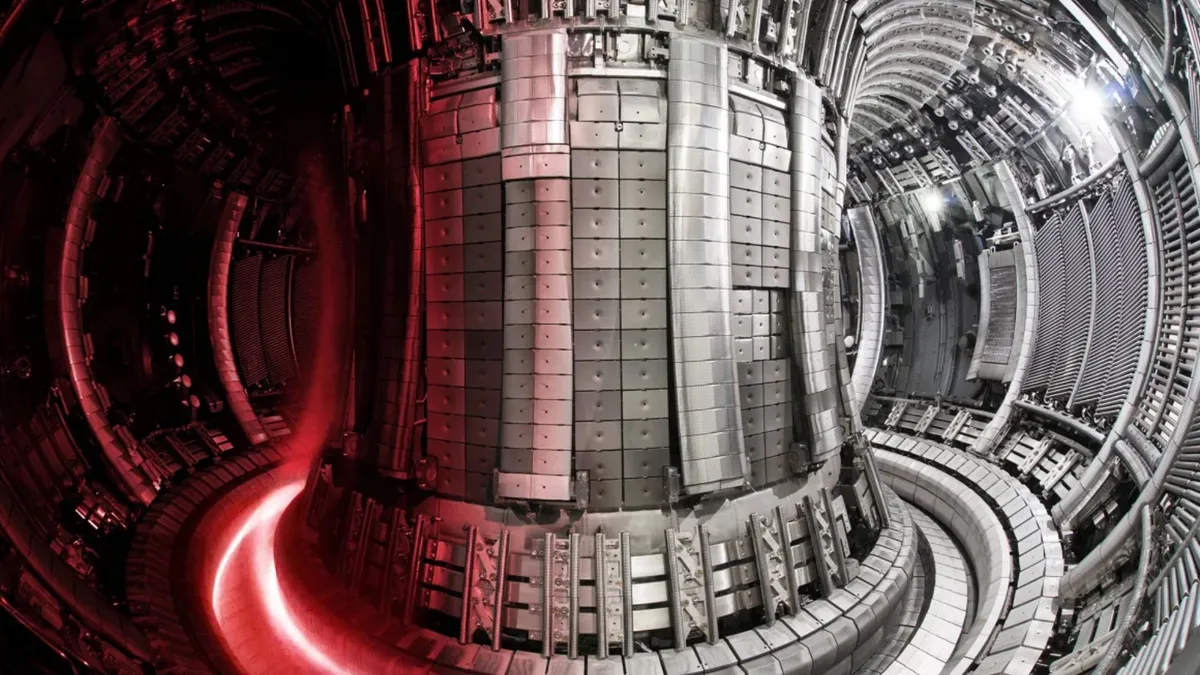Nuclear fusion, the lifeblood of celestial bodies like the Sun, offers a tantalizing promise of virtually limitless, eco-friendly energy.
In a groundbreaking achievement, the JET laboratory, nestled in the United Kingdom, has shattered previous records in nuclear fusion, catapulting humanity closer to its dream of clean, boundless electricity. This monumental stride, detailed in a report by the BBC, underscores the potential of nuclear fusion to revolutionize global energy landscapes while mitigating environmental impact.
The essence of stars’ inexhaustible energy lies in nuclear fusion—a process now harnessed in experimental settings. European scientists at the JET facility heralded the milestone, expressing elation at surpassing previously uncharted territories in their pursuit. “We have achieved things we’ve never done before,” they proclaimed, encapsulating the gravity of their accomplishment.
Nuclear fusion, the lifeblood of celestial bodies like the Sun, offers a tantalizing promise of virtually limitless, eco-friendly energy. Unlike conventional sources, fusion power holds the key to sustained energy production devoid of harmful emissions, presenting a formidable solution to climate change challenges. However, as Dr. Aneeqa Khan from the University of Manchester elucidated, realizing fusion’s potential demands surmounting formidable obstacles.
“To trigger atomic fusion on Earth, temperatures exceeding ten times that of the Sun—approximately 100 million degrees Celsius—are imperative, alongside achieving optimal particle density and duration,” Dr. Khan clarified, highlighting the formidable technical barriers confronting fusion scientists.
Despite the immense challenges, recent trials at JET have yielded promising results. Over a five-second period, the experiments yielded 69 megajoules of energy—a significant feat albeit modest in scale, equivalent to the energy required for four or five hot baths. While nuclear fusion power plants remain a distant prospect, each experiment propels humanity closer to the ultimate goal of harnessing fusion energy at commercial scales.
Reflecting on the significance of JET’s achievement, Prof. Stuart Mangles from Imperial College London emphasized the pivotal role of international collaboration in advancing fusion research. “The new results from JET’s final run are very exciting,” remarked Prof. Mangles, underscoring the collective effort of scientists and engineers across Europe in driving progress towards fusion energy realization.
The path to fusion energy dominance is rife with technical complexities and logistical challenges. Yet, the allure of clean, abundant energy propels relentless pursuit and innovation within the scientific community. With every breakthrough, the vision of a future powered by fusion energy edges closer to reality, promising a transformative paradigm shift in global energy dynamics.
Beyond the confines of national borders, fusion research serves as a beacon of international cooperation and scientific endeavor. The fusion community’s collaborative ethos, epitomized by endeavors such as the JET project, underscores the collective resolve to surmount humanity’s most pressing challenges.
As the world grapples with the urgent imperative of transitioning towards sustainable energy systems, nuclear fusion emerges as a beacon of hope—a potent source of clean, abundant energy capable of meeting the burgeoning demands of a rapidly evolving civilization. While hurdles persist, the recent triumph at the JET laboratory reinvigorates optimism and bolsters confidence in the quest for fusion energy—a journey poised to redefine the trajectory of human civilization.
